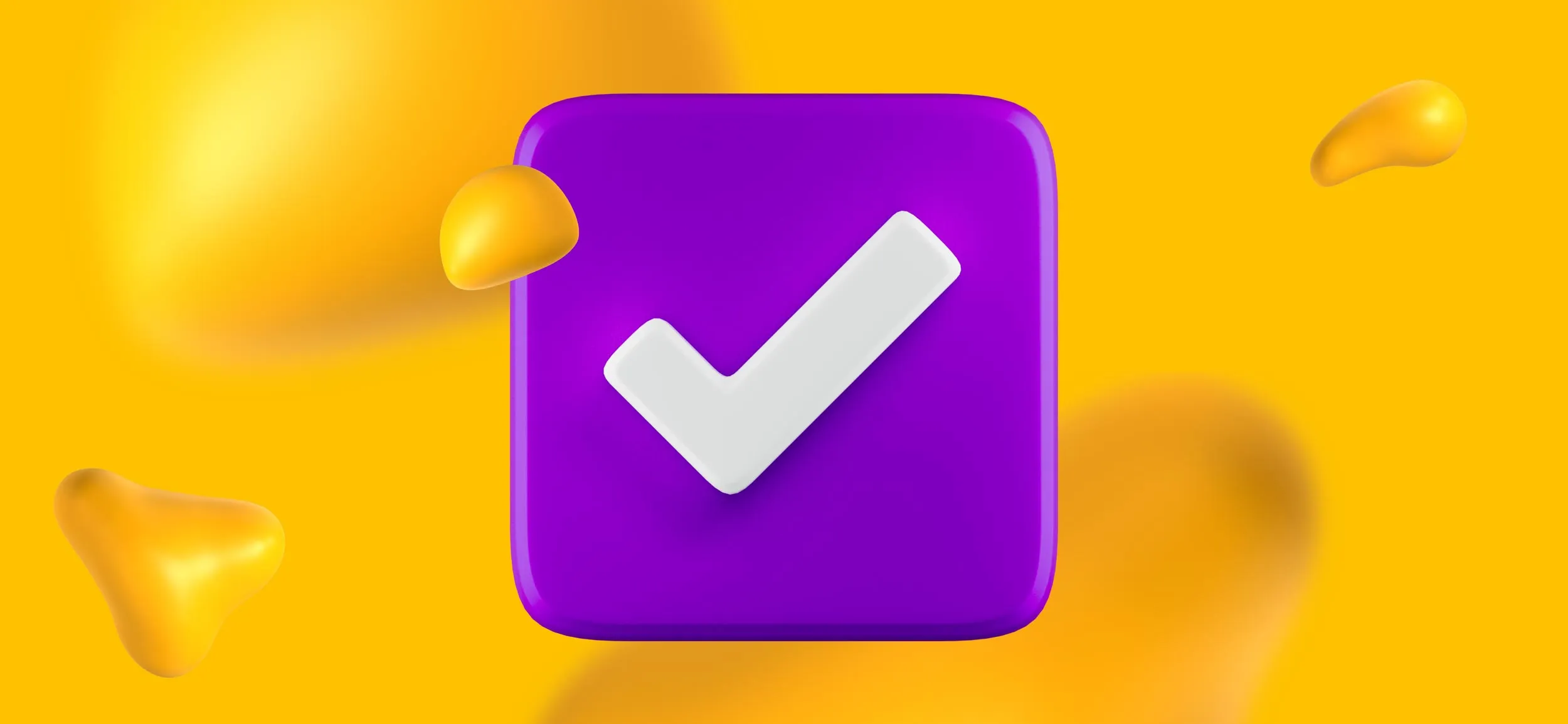Creating successful marketing campaigns is a bit like building a house; each step lays the foundation for the next and, to do it right, it takes planning, strategic decisions, and lots and lots of attention to detail.
But like any construction project, you can’t just wing it and expect success. Nope, you need a blueprint, a guide to help you with the process, to guide each and every step. This is why we have the 7 functions of marketing, a framework that acts as a foundation to guide your entire marketing process.
So, what role do these 7 functions play and how can your brand not only use them to not only successfully navigate the marketing process but to come out winners on the other side?
Consider today’s blog your guide.
Today, we’re diving into each of the 7 functions of marketing to help you better understand the role they play and to help you develop strategies to optimize their impact on your overall marketing process!
Let’s dive in!
What are the 7 Functions of Marketing?

If you’re not quite familiar with the 7 functions of marketing, they go like this:
- Promotion
- Selling
- Product or Service Management
- Marketing Information Management
- Pricing
- Financing
- Distribution
We’ll dive deeper into the role each of the 7 functions plays in just a bit, but first …
Why are the 7 Functions of Marketing So Important to My Success?
The 7 functions of marketing are so important to your overall success, because they directly contribute to understanding, creating, delivering, and communicating your brand’s value to your customers. Essential if you want to sell your products/services to your customers.
These functions help your business to identify customer needs, develop products or services that satisfy those needs, determine the right pricing, promote offerings effectively, make sure distribution and sales activities are as efficient as possible, conduct market research to stay relevant and manage financial resources for sustained growth and profitability.
Basically, the functions of marketing are all about building relationships with your customers, driving sales, and helping you achieve your business goals in a competitive market environment.
Winning Strategies Across all 7 Functions of Marketing

For the best results, each of these seven functions should work together to create value for your customers and help you to meet your marketing and overall business goals.
Let’s take a closer look at each of these functions, examine their goals, and then explore some strategies that can help you optimize each stage of the process!
1. Promotion
Promotion is all about communicating the value of the products or services your brand offers to your target customers. This includes advertising, public relations, sales promotions, and any other tactics that are designed to create awareness and drum up interest in your brand offerings.
The main goal of promotion is to make some noise about your products or services and persuade potential customers to choose them over those of your competitors
Best Promotion Strategies
- Social Media Advertising — Use popular social media platforms to reach a wider audience through targeted ads.
- Content Marketing — Create valuable, shareable content that highlights your products or services and engages your audience.
- Influencer Marketing — Collaborate with influencers that align with your brand and are relevant to your industry to promote your products or services.
- Email Marketing Campaigns — Engaging email campaigns can reach and nurture your potential customers.
- Limited-time Offers — Create a sense of urgency by introducing time-sensitive promotions or exclusive deals.
- Partnerships and Collaborations — Partner with other businesses or influencers to expand your reach and credibility.
- Loyalty Programs — Reward repeat customers with exclusive discounts or other perks to encourage brand loyalty.
- Contests and Giveaways — Engage your audience with fun contests or giveaways, creating excitement around your brand.
- Referral Programs — Encourage existing customers to refer others by offering incentives for successful referrals.
- Event Sponsorship — Sponsor or host events to increase brand visibility and connect with your target audience.
2. Selling
We all know what selling is.
Selling is the goal, it’s the handing over of your goods and services and converting potential customers into actual buyers. It also includes related activities like prospecting, presenting, handling objections, closing the sale, and anything else that leads to a conversion.
Below are some strategies to help you close the deal.
Best Selling Strategies
- Consultative Selling — Focus on understanding your customer's needs and providing tailored solutions that best fit those needs.
- Relationship Selling — Build strong, long-term relationships with customers, emphasizing trust and loyalty.
- Solution Selling — Highlight the benefits and solutions your product or service offers to meet customer needs and hit their pain points.
- Cross-selling and Upselling — Suggesting complementary products or upgrades to increase the overall sale value.
- Storytelling in Sales — Use compelling narratives to illustrate how your product or service solves a problem or hits a pain point.
- Social Selling — Use social media platforms to connect with potential customers and showcase offerings.
- Value-Based Selling — Emphasize the value and benefits your product brings, rather than just its awesome features.
- Objection Handling Techniques — Equip your sales team with effective strategies to address and overcome even the most cynical of objections.
- Closing Techniques — Have your sales team practice various closing methods like assumptive closing, choice closing, or trial closing to confidently close the deal.
- Sales Training and Development — Continuously invest in training to ensure that the skills of your sales team are up to date.
3. Product or Service Management

This function of marketing involves the careful planning, developing, and maintaining of your product or service throughout its entire lifecycle. This includes making key decisions on aspects of your products like design, features, branding, and quality.
The goal here is to make sure that your product or service is always meeting customer needs and helping you stay competitive in the market.
Here are some strategies to help you get it done!
Best Product / Service Management Strategies
- Customer Feedback Integration — Regularly gather and incorporate customer feedback to enhance product/service features.
- Continuous Improvement Practices — Set up processes for ongoing refinement and upgrades to make sure your brand offerings meet evolving customer expectations.
- Competitor Analysis — Keep a close eye on your competitors’ products/services to identify opportunities for differentiation and improvement.
- Innovation and Research — Don’t be afraid to invest in research and development to stay ahead of market and industry trends and introduce innovative elements that set your brand apart.
- Quality Assurance Measures — Establish rigorous quality control procedures to ensure the consistency and reliability of your products.
- Lifecycle Planning — Put in place a comprehensive plan that addresses every stage of the product or service lifecycle.
- Branding Consistency — Maintain a consistent brand image across all aspects of your product or service.
- Agile Product Management — Stay on your toes with agile methodologies to adapt quickly to market changes and customer demands.
- Cost Optimization — Continuously evaluate production costs and explore efficiencies without compromising quality.
- Strategic Partnerships — Form partnerships to enhance offerings through collaborations or integrations.
4. Marketing Information Management
Marketing information management is the process of gathering, storing, analyzing, and distributing all of your collected data about your market, your competitors, and your customers.
The goal is to provide necessary and insightful information to your marketing team and other key plan-makers to help them make strategic and well-informed marketing decisions.
Here are some strategies to collect, store, protect, and distribute your data:
Best Marketing Information Management Strategies
- Centralized Database — Use a centralized database for efficient storage and easy retrieval of marketing data.
- Regular Data Audits — Conduct routine audits to make sure your data is accurate, relevant, and compliant with regulations.
- Data Encryption and Security Protocols — Put cybersecurity measures in place to safeguard your sensitive marketing information.
- Cross-Functional Collaboration — Build a company culture that encourages communication and collaboration between marketing and other departments to gather diverse perspectives on data needs.
- Automated Data Collection — Use automated tools for data collection to enhance efficiency and reduce human error.
- Competitor Intelligence Programs — Develop systematic approaches to gather and analyze data on competitor strategies.
- Real-Time Analytics — Use real-time analytics tools for quick decision-making based on the latest data.
- User-Friendly Dashboards — Design intuitive dashboards for easy visualization and interpretation of marketing data.
- Customer Feedback Systems — Establish mechanisms to collect and integrate customer feedback into marketing insights.
- Compliance Monitoring — Regularly monitor and update data management practices to keep your brand compliant with regulations.
5. Pricing
Pricing is where you determine an appropriate price for your products or services.
It can be a tricky thing to do and missing your mark could mean lost revenue. To decide what that magic number or numbers are going to be, you'll first need to consider factors like production costs, competitor pricing, and perceived value.
The goal here is to set a price that maximizes your revenue while still remaining attractive and worthwhile to your customers.
Best Pricing Strategies
- Value-Based Pricing — Set prices based on the perceived value of your product or service to the customer.
- Competitive Pricing — Keep an eye on your competitor’s prices to keep your brand competitive in the market.
- Dynamic Pricing — Adjust prices in real-time based on market demand, seasonality, or other factors.
- Bundle Pricing — Offer packages or bundles of products or services at a discounted rate.
- Psychological Pricing — Use pricing techniques that appeal to consumer psychology, such as charm pricing (ending prices with 9) or prestige pricing (higher pricing that suggests higher quality).
- Penetration Pricing — Introduce products at a lower price initially to gain market share quickly.
- Skimming Pricing — Start with a high initial price and gradually lower it as the product matures in the market.
- Discount Pricing — Offer discounts, promotions, or special pricing for specific periods or customer segments.
- Geographic Pricing — Adjust prices based on the location of the customer or the market.
- Loss Leader Pricing — Sell a product at a loss to attract customers who can then purchase other, more profitable items you have to offer.
6. Financing
Financing in marketing refers to the process of securing and managing the financial resources you need to pull off all of your marketing plans.
It involves budgeting, financial analysis, and, finally, the act of obtaining the actual funding. The goal here is to make sure that there is enough funding to support your marketing efforts and achieve your business goals.
Best Financing Strategies
- Bootstrap Financing — Use personal savings or revenue generated by the business to fund marketing initiatives.
- Venture Capital — Seek funding from venture capitalists in exchange for equity in the business.
- Crowdfunding — Raise funds from a large number of people, often through online platforms.
- Angel Investors — Secure funding from individual investors who believe in the business owner, the business, and its potential.
- Bank Loans — Apply for traditional bank loans to secure financing with specified repayment terms.
- Grants and Subsidies — Explore opportunities for grants or subsidies from government or private organizations.
- Strategic Partnerships — Form partnerships with other businesses that can provide financial support.
- Revenue-Based Financing — Secure funds based on a percentage of future revenue.
- Lines of Credit — Establish a line of credit with a financial institution for ongoing funding needs.
- Leasing and Equipment Financing — Lease necessary equipment or assets instead of purchasing outright to conserve cash.
7. Distribution
Distribution is all about getting your product or service from the manufacturer to your customer’s hands (or screens).
To do this effectively, you’ll need to make decisions on the right distribution channels, the logistics of distribution, and inventory management.
The goal is to make sure that your product is available to your customers when and where they want it, maximizing convenience and accessibility.
Best Distribution Strategies
- Direct-to-Consumer (DTC) Model — Sell directly to customers through online stores, digital platforms, or brick-and-mortar stores.
- Retail Partnerships — Distribute products through established retail partners or chains.
- Wholesalers and Distributors — Use third-party wholesalers or distributors to reach a broader market.
- eCommerce Platforms — Leverage popular online marketplaces for product distribution.
- Brick-and-Mortar Stores — Establish a presence in physical retail locations.
- Dropshipping — Partner with suppliers to fulfill orders directly to customers, avoiding inventory storage.
- Cross-Docking — Streamline distribution by transferring products directly from suppliers to customers.
- Third-Party Logistics (3PL) — Outsource logistics functions to specialized companies.
- Global Distribution Network — Expand distribution to international markets through strategic partnerships.
- Strategic Alliances — Form alliances with other businesses to enhance distribution capabilities.
<div class="c-blog_comp-cta cc-component-1"><div class="c-blog_comp-cta-left"><div class="c-blog_comp-cta-left-wrap"><img src="https://global-uploads.webflow.com/61cdf3c5e0b8155f19e0105b/6369722e59155470b6840033_Potential-clients.png" loading="lazy" alt="" class="c-blog_comp-cta-left-img"></div></div><div class="c-blog_comp-cta-right"><div class="c-blog_comp-content"><div class="c-text-wrapper cc-mb-32"><div class="c-title-4 cc-bold"><strong>Want to save money without sacrificing the quality?</strong></div></div><div class="c-text-wrapper"><div class="c-text-2">Say goodbye to traditional, expensive agencies and unreliable marketplaces. Say hello to Designity.<br></div></div></div><div class="c-blog_comp-wrapper"><a href="/pricing" target="_blank" class="c-button cc-primary cc-inverted w-button"><strong>Get Your 2-Week Trial</strong></a></div></div></div>
Designity: A Creative Way to Elevate Your Brand
Promoting your goods and services is hard work.
We know that firsthand and that’s why we have a creative solution to propose to you.
Here it is now: Why not partner with Designity?
Partnering with Designity is a cost-effective way of lessening the amount of work it takes to successfully take your products from ideas to the shelves.
With Designity on your team, you’ll have a creative hub, a place to turn your data insights into action, and a place to create the marketing assets you’ll need to promote your products and services and keep them flying off the shelves.
Our Creative Directors are marketing and design experts and with the top 3% of US-based creative talent at your service, you’ll soon have the marketing strategies and assets you’ll need to effectively promote your products, boost your brand awareness and sales, and drive your ROI for meaningful growth!
Why not have a look at our portfolio and see what we’ve been able to create for brands just like yours? And when you’re ready, book a demo call and sign up for your two-week, no-obligation trial to take our services out for a test drive!
We can’t wait to help you elevate your brand!










